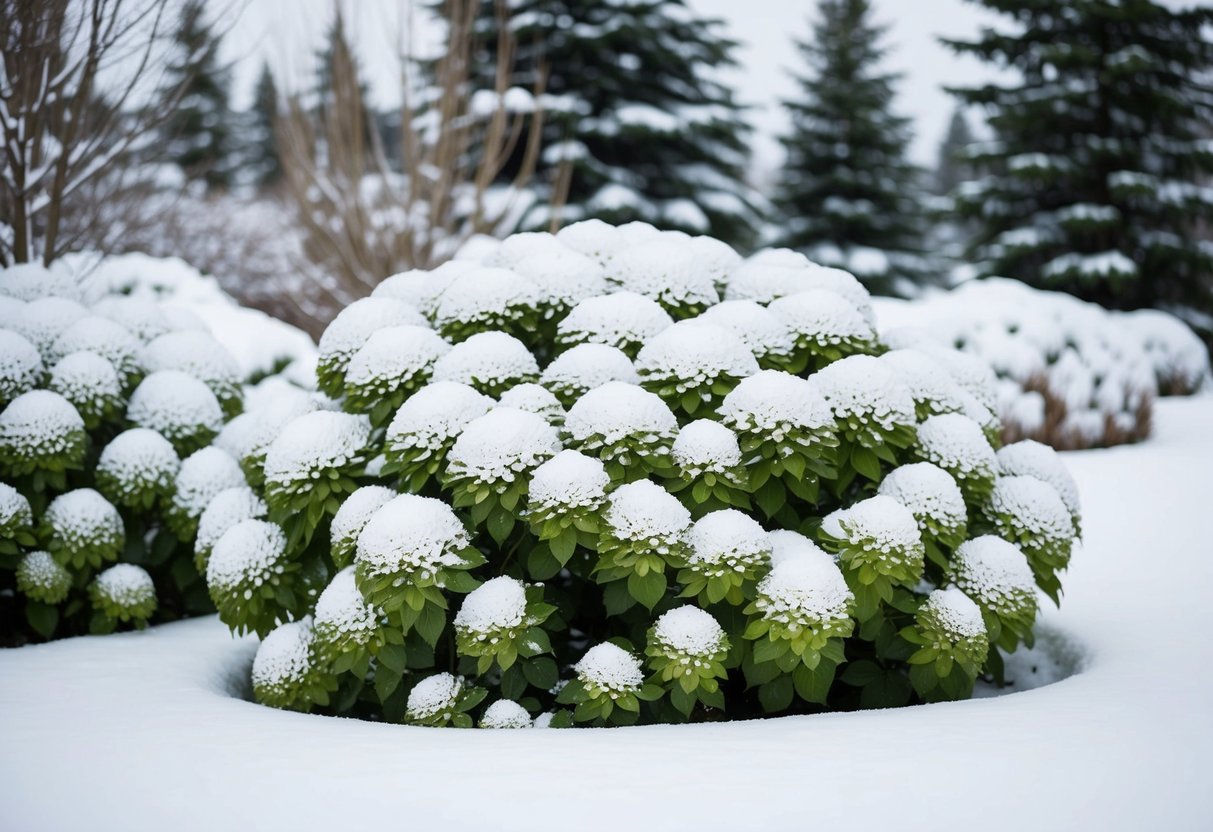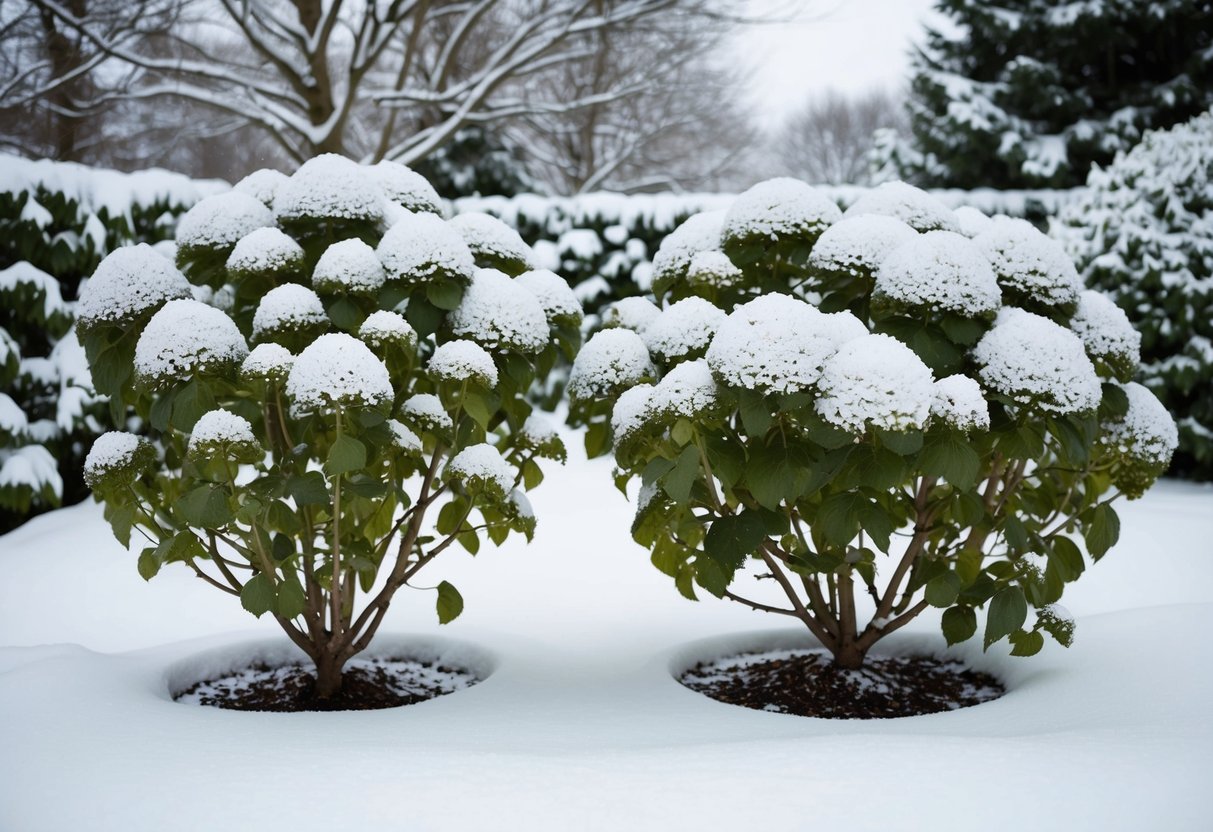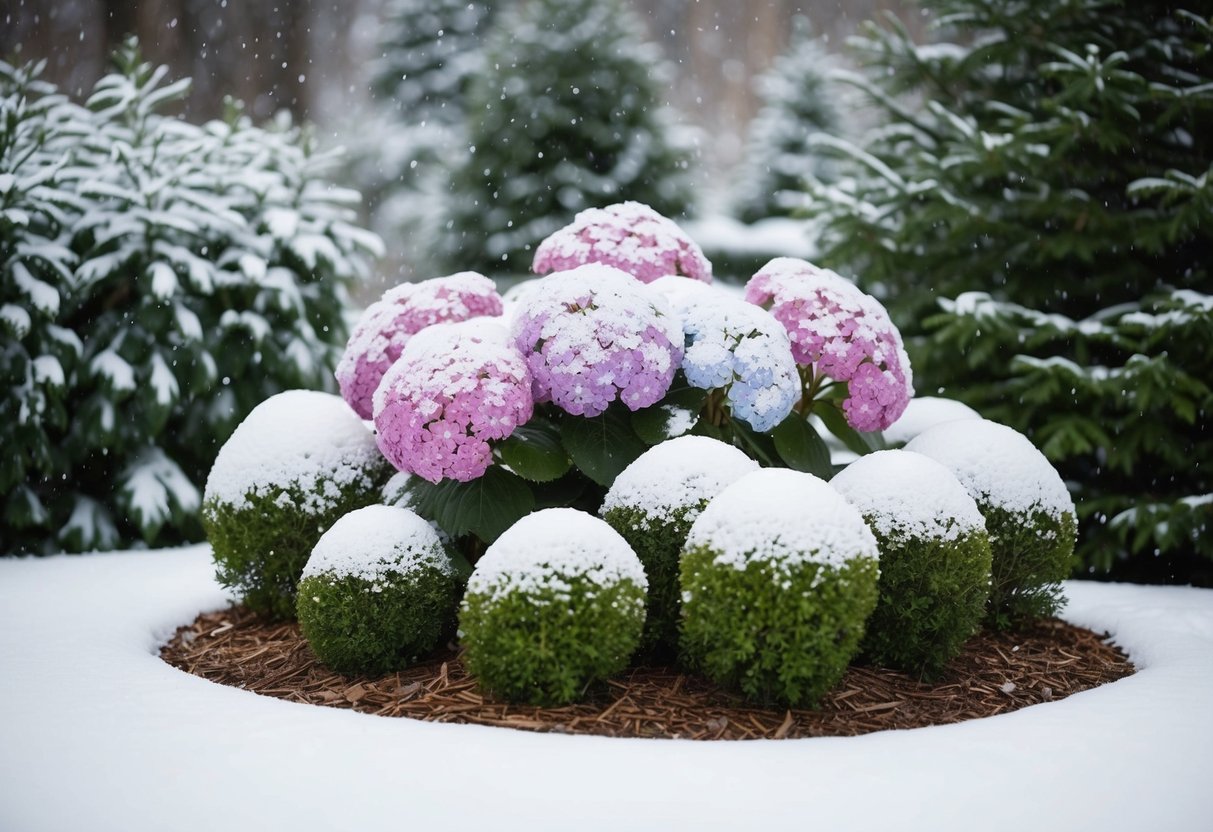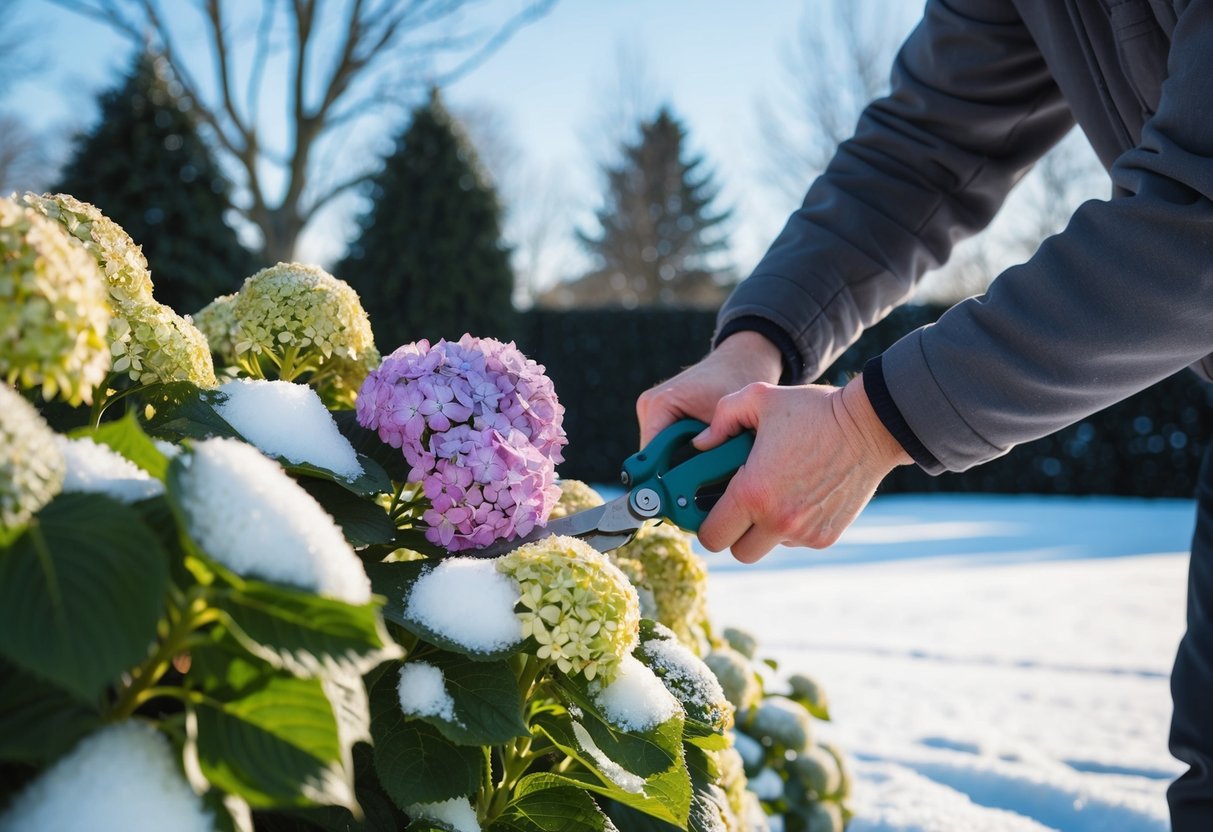Can Hydrangeas Stay Out in the Winter? Tips for Cold Weather Care
Caring for hydrangeas in winter can be a bit of a puzzle for gardeners who want to keep their gardens vibrant year-round. You might be wondering if these stunning shrubs can handle staying outside during the cold months. Yes, hydrangeas can stay outside in the winter, but they might need a bit of protection to thrive.
Knowing how to give them that extra care can make all the difference.

Different varieties of hydrangeas have varying levels of cold tolerance, so it’s important to identify your type and its needs.
Some hydrangeas are hardier and can resist frost, while others may suffer in lower temperatures. Using strategies like covering your plants can prevent damage from frost and improve their survival chances. Find more details on the benefits of covering hydrangeas in this helpful resource.
You’re not alone if you feel a bit unsure about winter preparation for your hydrangeas. Many gardeners have similar questions.
By taking steps to properly winterize your shrubs, you can enjoy their beauty for many years. Learning the best practices for winter care will ensure your hydrangeas remain healthy and ready to bloom again come spring.
Understanding Hydrangeas and Winter Hardiness

Hydrangeas vary in their ability to withstand cold weather, making it important to choose the right type for your climate. Some varieties thrive in cold environments, while others need extra care during winter months.
Different Types of Hydrangeas
There are several types of hydrangeas, each with unique characteristics. Bigleaf hydrangeas (Hydrangea macrophylla) are popular for their large, colorful blooms but require some winter protection. They do well in USDA zones 6 to 9.
Panicle hydrangeas (Hydrangea paniculata), known for their cone-shaped blooms, are hardy and can handle colder climates, thriving in zones 3 to 8.
Oakleaf hydrangeas (Hydrangea quercifolia) have distinct foliage and do well in zones 5 to 9. They are relatively hardy and can tolerate some cold.
Smooth hydrangeas (Hydrangea arborescens), like the ‘Annabelle’ variety, are hardy even in colder areas, suitable for zones 3 to 9.
Lastly, climbing hydrangeas can also be quite resilient, surviving in zones 4 to 8.
Hydrangea Hardiness by Species
The hardiness of hydrangeas depends largely on their species. Hydrangea macrophylla often struggles in harsh winters without protection. They may need mulching and covering to prevent damage.
On the other hand, Hydrangea paniculata is more robust and can naturally withstand lower temperatures.
Hydrangea quercifolia and Hydrangea arborescens are also quite robust, handling a range of winter conditions. They might still benefit from a layer of mulch to protect their roots.
Make sure to note the USDA zone recommendations when planting hydrangeas, as this will guide you in choosing plants that will survive and thrive in your specific climate conditions.
Preparing Hydrangeas for Winter

To keep your hydrangeas healthy through the winter, it is important to start preparation early. This includes using proper mulching techniques and considering methods like burlap insulation to protect your plants from harsh conditions.
When to Start Winter Preparation
Begin preparing your hydrangeas for winter in the late fall. It’s best to start after your area’s first frost. This timing allows your plants to gradually adapt to colder temperatures without a sudden shock.
Keep an eye on local weather patterns to ensure your timing is right. By starting your preparation early, you give your hydrangeas the best chance to stay healthy throughout the cold months. Regularly check your plants to decide on the right time for additional protection steps.
Proper Mulching Techniques
Mulching provides much-needed insulation for your hydrangeas.
Use a thick layer of mulch, about 12 inches, around the base to protect the crown and roots during winter. This mulching technique helps conserve moisture and maintain warmth, even in harsh conditions.
Choose materials like shredded leaves, bark, or hardwood mulch. Apply it evenly around the base, ensuring no part of the roots is exposed. This setup prevents freeze damage and supports moisture retention, which is vital for the plant’s health over the winter months.
Utilizing Burlap for Insulation
Consider using burlap as an additional layer of protection.
This material is excellent for shielding your hydrangeas from intense winter gusts and freezing temperatures.
To use burlap for insulation, wrap the material around each plant, securing it firmly but leaving space for air circulation.
Create a small frame around the plant and fill it with insulating materials like leaves or pine cones for extra protection. This setup not only helps retain warmth but also reduces exposure to extreme weather conditions, ensuring your hydrangeas remain safe through the winter. Regularly check the burlap cover to adjust it if needed.
Special Considerations for Potted and Climbing Hydrangeas

When winter approaches, caring for potted and climbing hydrangeas becomes important. These plants have unique needs to ensure they thrive through colder temperatures.
Winter Care for Potted Hydrangeas
Potted hydrangeas can be vulnerable when temperatures drop. You might want to move them into a sheltered spot, like a garage or shed. This helps protect them from the harsh cold.
If moving them indoors isn’t an option, wrapping the pot in bubble wrap or burlap can offer some insulation.
Keeping the soil from freezing is critical. Consider placing mulch on top of the soil to help retain warmth. Make sure the container has proper drainage to prevent water from freezing and damaging the roots.
Check the watering needs of your potted hydrangeas even in winter. Though they require less water, they shouldn’t dry out completely.
Protecting Climbing Hydrangeas in Cold Weather
Climbing hydrangeas need protection to withstand winter weather as well.
You can use chicken wire to create a cage around the plant to hold leaves or straw, which acts as natural insulation. This protects the plant without trapping too much heat.
Make sure to mulch around the base of the plant to keep the roots warm. This is important if the plant is climbing in a container or directly in the ground.
Avoid pruning in the fall as this can expose tender parts to winter temperatures. If you follow these tips, your climbing hydrangeas will be better equipped to face the winter.
Optimal Winter Hydration and Protection Tactics

Before winter arrives, make sure your hydrangeas are ready to face the cold. Ensuring they are well-watered and protected from pests can help them thrive through the chilly months.
Deep Watering Before Freezing
Before the ground hardens from the cold, focus on deep watering.
Hydrangeas need to absorb enough moisture to handle winter cold temperatures. Begin by soaking the soil thoroughly. This helps the roots store water and stay strong when everything else freezes.
After watering, consider adding mulch or compost around the base. A thick layer helps lock in moisture and warmth, providing extra protection.
Organic materials such as hardwood mulch work well. They break down slowly and enrich the soil, benefiting your plant in the long run.
Guarding Against Rodents and Pests
Rodents and pests can be a problem during winter. To protect your hydrangeas, create a barrier using chicken wire around the plants. This deters curious critters from nibbling on the stems and bark.
Check regularly to ensure the wire remains secure. You can also add pine needles or oak leaves within the protective cage. These materials keep both moisture and pests at bay, thanks to their structure and natural properties. This dual protection helps keep your hydrangeas safe and healthy until springtime arrives.
Pruning and Maintenance to Ensure Spring Blooms

Keeping your hydrangeas healthy through careful pruning and maintenance is key to having beautiful blooms in spring. Knowing the right techniques for different hydrangea types and how to encourage healthy buds will make a significant difference.
Pruning Techniques for Different Hydrangea Types
First, it’s essential to identify what type of hydrangea you have. Different types require specific pruning methods.
For instance, smooth and panicle hydrangeas bloom on new wood and should be pruned in late winter or early spring. Cutting these back to about 6-12 inches encourages growth and blooms.
On the other hand, bigleaf, mountain, and oakleaf hydrangeas form buds on old wood. It’s crucial to avoid pruning these in spring. Prune them right after they bloom in summer to prevent cutting off next season’s flowers.
Proper pruning not only shapes your plants but also supports plant health and flowering.
Promoting Healthy Flower Buds for Spring
To get vibrant spring blooms, focus on the health of your flower buds during the colder months. Adding a layer of mulch will protect buds and stems from harsh winter conditions. This provides insulation and retains moisture. If you have old wood hydrangeas, you’ll need to give extra care to protect the existing buds.
Watering your hydrangeas deeply before the ground freezes helps the roots stay healthy. Avoid excessive fertilizing, as it can encourage leaf growth at the expense of flower buds.
For lacecap and endless summer hydrangeas, you should consider using burlap wraps or protective coverings in areas with severe winters to keep the buds intact. Taking these steps ensures that your hydrangeas are ready for a beautiful burst of color when spring arrives.







